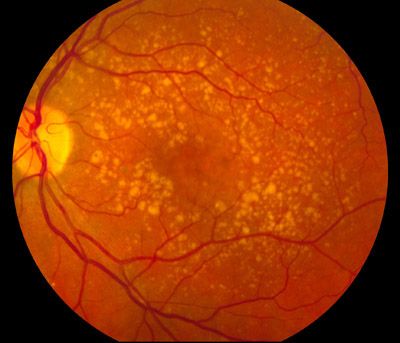Article
Trends in Anti-VEGF Injections Claims Data From 2012 to 2015
Author(s):
Investigators examined anti-VEGF injections claims data among Medicare Part B beneficiaries from 2012 to 2015 and found that aflibercept injections increased by 69% during that time.

A recent study into the usage rates of different anti-VEGF therapies in Medicare Part B Beneficiaries with neovascular age-related macular degeneration found that bevacizumab and ranibizumab injections have decreased since 2012, while aflibercept injections have increased by 69.4%.
The study also found that 3% of ophthalmologists account for 17.6% of the aflibercept injections during 2015 and 31% of bevacizumab injections during that same time period.
Investigators sought to evaluate any apparent trends in anti-VEGF injections for US Medicare Part B beneficiaries from 2012 to 2015, as talks of the treatment and its cost have garnered attention nationwide. Investigators pointed to two studies, from Aug. 2016 and Sept. 2018, when relaying the motive behind their analysis.
The 2016 study found notable variability between the different anti-VEGF therapies (aflibercept, 2.0 mg, $1850; ranibizumab, 0.3 mg, $1170 and 0.5mg, $1950; and bevacizumab repackaged, 1.25mg, $60). The 2018 study found that bevacizumab and ranibizumab accounted for approximately $2 billion of Medicare Part B expenditures in 2010 and, by 2015, aflibercept and ranibizumab were the leading medication in overall spending — accounting for 12% of the Medicare Part B budget.
The 2018 study was led by Shriji Patel, MD, assistant professor of ophthalmology and co-fellowship director at the Vanderbilt Eye Institute, who is also an investigator in the current study.
“It was a natural progression from the previous study, which was more of a broad look at total expenditure — taking things to the next level with a granular analysis where we explored the highest areas of expenditures with these medications,” Patel said.
Using the 2015 data from the Centers for Medicare and Medicaid Services Medicare Part B Provider Utilization Files, investigators analyzed trends among 2,574,124 intravitreal injections performed by 3348 ophthalmologists during the year. A group of 100 performed the highest volume of injections. During 2015, the total number of injections given was 870,843 for aflibercept, 697,412 for ranibizumab, and 1,147,432 for bevacizumab.
While investigators noted that aflibercept injections rose by 69.4% from 2013 to 2015, ranibizumab claims decreased by 7.1% from 2012 to 2015 and, during that same time period, bevacizumab claims decreased by 17.1%.
A group of 100 (3%) ophthalmologists performed 332,203 (12.89%) injections. When examining the 100 ophthalmologists who performed the highest volume of each anti-VEGF therapy included. Upon analysis, investigators found that the percentage of use by the 100 ophthalmologists perfuming the injections was statistically significantly greater for ranibizumab when compared with aflibercept and bevacizumab.
The 100 ophthalmologists that perfumed the highest volume of ranibizumab injections accounted for 31% of all ranibizumab injections nationwide. The 100 ophthalmologists that performed the highest volume of aflibercept injections accounted for 17.6% of the national total and the 100 ophthalmologists that performed the highest volume of bevacizumab injections accounted for 19.6% of the national total.
Investigators performed similar analyses for 2012, 2013 and 2014. Analyses revealed that use by the 100 ophthalmologists who performed the highest volume of injections was stable for ranibizumab over time (31.9% in 2012 and 31.0% in 2015), while bevacizumab’s share of the national total among the 100 ophthalmologists performing the highest volume of injections increased from 17.0% in 2012 to 19.6% in 2015. For aflibercept, the share decreased from 22.4% in 2013 to 17.6% in 2015.
Investigators noted that 13 ophthalmologists were among the 100 ophthalmologists performing the highest number of aflibercept injections and the 100 performing the highest volume of ranibizumab injections. A group of 9 ophthalmologists were among the 100 ophthalmologists performing the highest volume of aflibercept injections and the 100 performing the high volume of bevacizumab injections. No ophthalmologists overlapped between the groups of the 100 ophthalmologists performing the highest volume of ranibizumab injections and the 100 performing the highest volume of bevacizumab injections.
In an interview with MD Magazine®, Patel remarked on the importance of having an in-depth understanding, in terms of both usage rates and costs, when examining trends in healthcare.
“It’s grabbing attention, the medication costs are under the microscope and I do think it’s important for us to understand trends. More for us to be armed with the appropriate knowledge. When we’re posed a question like, ‘Where are all these costs coming from?’, we can say ‘Well, look. These conditions are having more prevalence and this is how we’re injecting’,” Patel said.
This study, titled “Analysis of Anti—Vascular Endothelial Growth Factor Injection Claims Data in US Medicare Part B Beneficiaries From 2012 to 2015,” is published in JAMA Ophthalmology.





